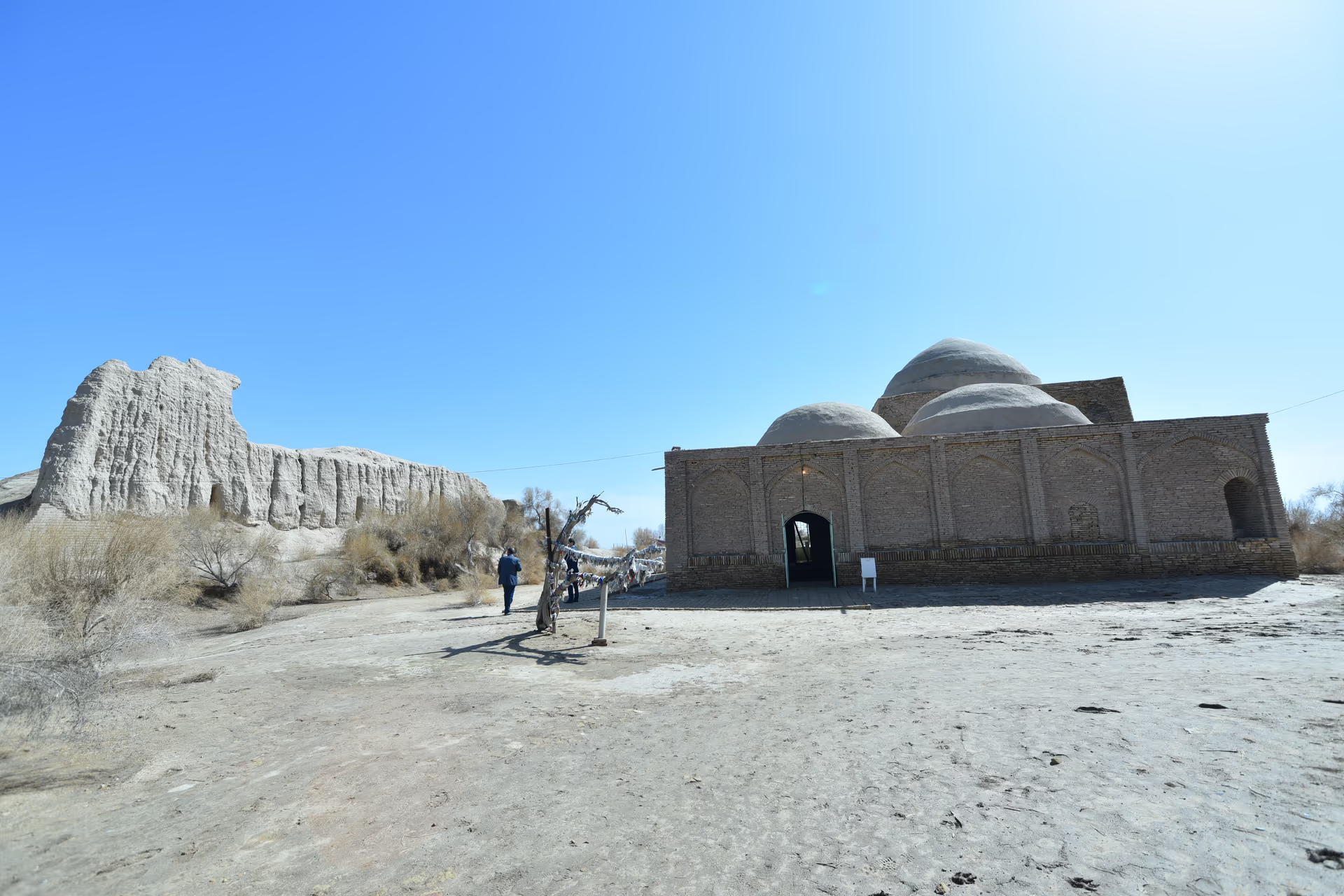
Muhammad ibn Zayd Mausoleum — A Seljuk Monument to a Martyr of Faith
About This Destination
The Muhammad ibn Zayd Mausoleum, located about 1.5 km northwest of the Sultan Sanjar Mausoleum in Ancient Merv, dates to around 1140 CE, during the reign of Sultan Sanjar (r. 1118–1157), the last great ruler of the Seljuk Empire. Although Muhammad ibn Zayd himself lived and died in the early 9th century, this mausoleum was built centuries later as a commemorative shrine by the local Shia community of Merv.
History
Muhammad ibn Zayd, a Shi’a cleric and son of Musa al-Kazim, the 7th Imam of the Twelver sect, became a symbol of resistance during the reign of Caliph Al-Ma’mun (813–833). Amid the Abbasid Caliphate’s growing hostility toward Shi’ism, Zayd’s teachings inspired uprisings across Iraq, including the Abu al-Saraya revolt. Captured and executed by Al-Ma’mun in 815, Muhammad ibn Zayd became revered as a martyr for justice and faith. The Architecture The mausoleum’s rectangular structure contains several domed chambers, with Zayd’s memorial room in the southwest corner, facing west-southwest toward Mecca. Remarkably, though not a mosque, it includes a mihrab niche aligned with the qibla wall, symbolizing eternal devotion. Built entirely of baked brick, the monument is devoid of stucco or glazed ornament — a hallmark of Seljuk architectural purity. Instead, intricate brick patterns, squinches, and herringbone motifs form the decoration. A Kufic inscription band, crafted in relief brick, encircles the main chamber, reflecting the artistry and precision of Merv’s master builders. Nearby ruins suggest the presence of a caravanserai and a sardoba (step-well) once used by visiting pilgrims. Even today, the site remains a place of pilgrimage and prayer, where visitors tie ribbons to trees and leave small cradle-shaped offerings — symbols of faith, fertility, and hope.
Tours Available
Quick Info
Plan Your Visit
Need Help?
Our travel experts are here to help you plan the perfect trip
